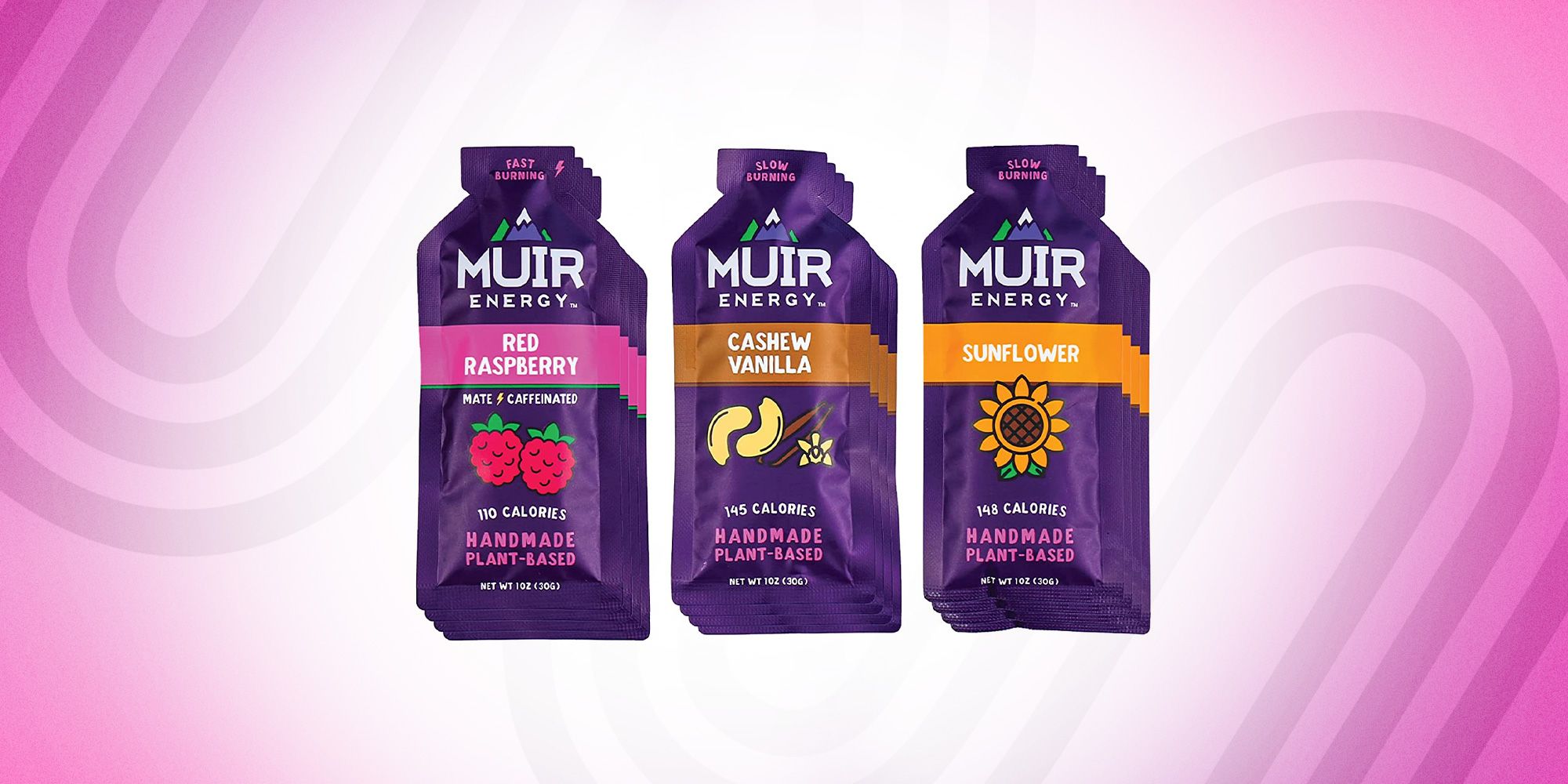

Featured
What Is Considered Intense Exercise
Modified: January 2, 2024
Learn what is considered intense exercise and how it can benefit your fitness journey. Featured tips and techniques for maximizing your workouts.
Introduction
Intense exercise is a key component of a well-rounded fitness routine. It pushes our bodies to their limits, challenging us physically and mentally. But what exactly is considered intense exercise?
Intense exercise refers to physical activity that requires a high level of effort and causes a significant increase in heart rate and breathing. It goes beyond moderate exercise and typically involves pushing yourself to your maximum capacity.
Engaging in intense exercise has numerous benefits for our overall health and well-being. It helps improve cardiovascular fitness, builds strength and endurance, burns calories, and can even boost our mood. However, it is important to approach intense exercise with caution, as it can also pose risks if not done properly.
In this article, we will delve deeper into what constitutes intense exercise and its various types. We will also discuss the factors to consider before starting intense exercise, safety guidelines to follow, common mistakes to avoid, and provide sample intense exercise routines for you to try.
Whether you are a seasoned fitness enthusiast or just starting your fitness journey, understanding the ins and outs of intense exercise can help you make informed decisions about your workout routine and maximize its benefits while minimizing the risk of injury.
Definition of Intense Exercise
Intense exercise is characterized by its vigorous nature, requiring significant effort and pushing the body to its limits. It involves activities that elevate the heart rate and breathing to a high level, stimulating cardiovascular and muscular systems.
While the intensity of exercise is subjective and can vary from person to person, there are certain key indicators that help define what is considered intense exercise. One of these indicators is the rate of perceived exertion (RPE), which measures the subjective intensity level during physical activity on a scale from 1 to 10. Intense exercise typically falls within the range of 7-10 on the RPE scale.
Another way to determine the intensity of exercise is through heart rate monitoring. Intense exercise often involves reaching and sustaining a target heart rate that is a certain percentage of your maximum heart rate. This can be calculated using the formula: 220 – age = maximum heart rate. Intense exercise typically requires reaching a heart rate that is around 75-85% of this maximum.
Furthermore, the duration and frequency of intense exercise also contribute to its definition. It is typically recommended to engage in at least 75 minutes of intense exercise spread throughout the week, or alternatively, 150 minutes of moderate exercise. This ensures that the body receives the necessary stimulus for strengthening and conditioning.
Examples of intense exercise include high-intensity interval training (HIIT), sprinting, plyometrics, and heavy weightlifting. These activities are characterized by short bursts of high-intensity effort followed by periods of rest or lower-intensity exercise.
It is important to note that intense exercise should be tailored to individual fitness levels and abilities. What may be intense for one person may not be the same for another. It is always advisable to consult with a fitness professional or healthcare provider to determine the appropriate level of intensity for your specific needs and goals.
Benefits of Intense Exercise
Engaging in intense exercise offers an array of benefits for both our physical and mental well-being. Let’s explore some of the key advantages of incorporating intense exercise into our fitness routine:
1. Improved Cardiovascular Health: Intense exercise helps strengthen the heart and promotes efficient blood circulation. It can lower blood pressure, reduce the risk of heart disease, and improve overall cardiovascular fitness.
2. Increased Strength and Endurance: Intense exercise challenges our muscles to work harder, leading to improved strength and endurance. This can enhance our performance in various physical activities, such as sports, weightlifting, or even daily activities like carrying groceries or climbing stairs.
3. Weight Management: Intense exercise burns a significant amount of calories during and after the workout. It can help with weight loss or weight maintenance by increasing metabolism and promoting fat burning.
4. Enhanced Mental Health: Intense exercise triggers the release of endorphins, also known as “feel-good” hormones. Regular intense workouts can reduce stress, alleviate symptoms of anxiety and depression, and improve overall mood and mental well-being.
5. Increased Bone Density: Intense exercise, particularly weight-bearing activities like strength training or jumping exercises, helps increase bone density. This can reduce the risk of osteoporosis and improve overall bone health.
6. Improved Body Composition: Intense exercise can help reshape the body by reducing body fat and increasing lean muscle mass. This can result in a more toned and defined physique.
7. Boosted Energy Levels: Regular intense exercise can increase energy levels and combat fatigue. It enhances blood flow and oxygen delivery to the muscles and improves the efficiency of the cardiovascular and respiratory systems.
8. Better Cognitive Function: Intense exercise has been linked to improved cognitive function, including enhanced memory, attention, and problem-solving skills. It stimulates the growth of new neurons and improves overall brain health.
9. Increased Self-Confidence: Achieving and surpassing personal fitness goals through intense exercise can boost self-esteem and self-confidence. It empowers individuals to overcome challenges and develop a sense of accomplishment.
10. Longevity and Disease Prevention: Engaging in intense exercise regularly has been associated with increased longevity and reduced risk of chronic diseases such as heart disease, diabetes, and certain types of cancer.
These benefits highlight the importance of incorporating intense exercise into our fitness routine to optimize our overall health and well-being. However, it is crucial to approach intense exercise with caution and adhere to proper safety guidelines to minimize the risk of injury or overexertion.
Types of Intense Exercise
Intense exercise encompasses a wide range of activities that challenge the body and promote strength, endurance, and cardiovascular fitness. Here are some popular types of intense exercise:
- High-Intensity Interval Training (HIIT): HIIT involves alternating periods of intense exercise with short recovery periods. It typically includes a combination of cardiovascular exercises, such as sprinting, jumping jacks, or burpees, combined with bodyweight exercises or resistance training. HIIT workouts are efficient and effective for improving cardiovascular fitness and burning calories.
- Sprinting: Sprinting is a form of high-intensity running characterized by short bursts of maximum effort. It can be performed on a track, on the treadmill, or even outdoors. Sprinting engages the fast-twitch muscle fibers, improving speed, power, and cardiovascular capacity.
- Plyometrics: Plyometric exercises involve explosive movements that rapidly stretch and contract the muscles. Examples include box jumps, squat jumps, and burpees. Plyometrics help improve power, strength, and agility.
- Heavy Weightlifting: Heavy weightlifting focuses on lifting heavy loads to build muscle strength and size. It typically involves compound exercises like squats, deadlifts, and bench presses. Heavy weightlifting promotes muscle growth, increases metabolism, and improves overall body composition.
- CrossFit: CrossFit is a high-intensity training program that incorporates elements of weightlifting, cardio, and bodyweight exercises. It consists of varied workouts performed at a high intensity, often in a competitive group setting.
- Circuit Training: Circuit training involves moving from one exercise station to another, performing a series of exercises targeting different muscle groups. It combines cardiovascular exercise with resistance training, providing a full-body workout in a short amount of time.
- Bootcamp Workouts: Bootcamp workouts are intense group exercise sessions that typically combine cardiovascular exercises, bodyweight exercises, and strength training. They are designed to challenge participants and improve overall fitness levels.
- Cycling/Spinning: Cycling or spinning classes involve high-intensity cycling workouts performed on stationary bikes. These classes incorporate intervals, resistance training, and simulated sprints to improve cardiovascular fitness and leg strength.
- Cross-Training: Cross-training involves combining different forms of exercise, such as swimming, cycling, and running, to improve overall fitness and prevent boredom. It allows for a balanced and varied workout routine.
These are just a few examples of intense exercise options. It is essential to choose activities that align with your interests, fitness level, and goals. Remember to start gradually and progress at your own pace, giving your body time to adapt and recover.
Factors to Consider Before Starting Intense Exercise
Before diving into intense exercise, there are several essential factors to consider to ensure a safe and effective workout. Taking these factors into account will help you optimize your fitness journey and minimize the risk of injury.
- Health and Fitness Level: Assess your current health status and fitness level before embarking on intense exercise. If you have any pre-existing medical conditions or concerns, consult with your healthcare provider to determine if intense exercise is suitable for you.
- Goals and Objectives: Clearly define your fitness goals and objectives. Are you aiming to improve cardiovascular endurance, build strength, lose weight, or enhance overall fitness? Understanding your goals will guide you in choosing the most appropriate types of intense exercise to incorporate into your routine.
- Gradual Progression: When starting intense exercise, it is crucial to gradually increase the intensity and duration of your workouts. Begin at a manageable level and gradually increase the challenge over time. This allows your body to adapt and reduces the risk of overexertion or injury.
- Proper Form and Technique: Before engaging in intense exercise, learn and practice correct form and technique for each exercise. Proper form ensures maximum effectiveness and reduces the risk of injury. If needed, seek guidance from a qualified fitness professional.
- Recovery and Rest: Allow your body adequate time to recover and rest between intense workouts. This is essential for muscle repair, injury prevention, and overall performance improvement. Include rest days in your routine and prioritize sleep and proper nutrition to support recovery.
- Warm-Up and Cool-Down: Always perform a thorough warm-up before engaging in intense exercise. This prepares your muscles and joints, increases blood flow, and reduces the risk of injury. Additionally, include a cool-down period after your workout to gradually decrease your heart rate and stretch your muscles.
- Listen to Your Body: Pay attention to any physical discomfort or signs of excessive fatigue during intense exercise. Listen to your body and adjust your workout intensity or take breaks as needed. Pushing through pain or extreme exhaustion can lead to injury or burnout.
- Appropriate Attire and Equipment: Wear comfortable, breathable clothing and suitable footwear for your chosen intense exercise. Make sure any equipment or gear you use is in good condition and properly adjusted for safety and optimal performance.
- Nutrition and Hydration: Fuel your body with a balanced diet that includes sufficient nutrients to support intense exercise. Stay hydrated before, during, and after your workouts to maintain optimal performance and prevent dehydration.
- Medical Clearance: If you have any underlying health conditions or concerns, it is advisable to seek medical clearance before starting intense exercise. Your healthcare provider can evaluate your condition and provide recommendations specific to your needs.
Considering these factors before starting intense exercise will help set the foundation for a safe and effective fitness routine. It is important to prioritize your health and well-being throughout your fitness journey and make adjustments as necessary.
Safety Guidelines for Intense Exercise
Intense exercise can offer numerous benefits, but it is important to prioritize safety to minimize the risk of injury. By following these safety guidelines, you can ensure a safe and effective intense workout:
- Consult with a Healthcare Professional: If you have any underlying health conditions or concerns, consult with a healthcare professional before starting intense exercise. They can provide guidance and ensure that it is safe for you to engage in vigorous physical activity.
- Proper Warm-Up: Always start your intense exercise session with a proper warm-up. This should include dynamic stretching and exercises that warm up the muscles and increase blood flow. A warm-up helps prepare your body for the demands of intense exercise and reduces the risk of injury.
- Gradual Progression: Do not increase the intensity or duration of your workouts too quickly. Gradually progress over time to allow your body to adapt. Pushing too hard too soon can lead to overuse injuries or muscle strain.
- Listen to Your Body: Pay attention to any pain or discomfort during your intense workout. If you experience sharp or persistent pain, dizziness, nausea, or shortness of breath, stop exercising and seek medical attention if necessary. Pushing through pain can worsen an injury or lead to further complications.
- Stay Hydrated: Proper hydration is crucial during intense exercise. Drink water before, during, and after your workout to replenish fluids lost through sweat. Dehydration can affect your performance and increase the risk of heat-related illnesses.
- Use Proper Technique: Maintain proper form and technique during your intense workouts. This reduces the risk of strain or injury. If you are unsure about the correct form, seek guidance from a qualified fitness professional.
- Rest and Recovery: Allow your body sufficient time to rest and recover between intense exercise sessions. Adequate rest promotes muscle repair and reduces the risk of overtraining. Avoid excessive training or consecutive days of intense exercise without proper recovery periods.
- Use Appropriate Equipment: When engaging in intense exercise, ensure you have the appropriate equipment and gear. This includes wearing suitable footwear, using proper safety equipment, and checking that any machinery or equipment is in good working condition.
- Consider the Environment: Be aware of your exercise environment and adjust accordingly. When exercising outdoors, be mindful of weather conditions, such as extreme heat or cold, and take necessary precautions. If exercising indoors, ensure proper ventilation and adequate space to perform exercises safely.
- Seek Professional Guidance: If you are new to intense exercise or unsure about proper workout techniques, consider working with a qualified fitness professional. They can design a safe and effective workout program tailored to your individual needs and provide guidance to ensure proper form and progression.
By following these safety guidelines, you can reduce the risk of injury and make the most of your intense exercise routine. Remember, safety should always be a priority when pushing your body to its limits.
Common Mistakes to Avoid during Intense Exercise
Engaging in intense exercise requires proper technique, caution, and attentiveness to ensure a safe and effective workout. Here are some common mistakes to avoid during intense exercise:
- Overtraining: Pushing yourself too hard and not allowing enough time for rest and recovery can lead to overtraining. This can result in fatigue, decreased performance, and an increased risk of injury. Listen to your body and incorporate rest days into your routine.
- Skipping Warm-Up and Cool-Down: Failing to warm up properly before intense exercise and neglecting to cool down afterward can increase the risk of muscle strains and injuries. Always take the time to properly warm up your muscles and gradually cool them down after your workout.
- Ignoring Proper Form: Using improper form during intense exercise can lead to injury and reduce the effectiveness of the workout. Focus on maintaining correct posture and technique to target the intended muscles and minimize stress on joints and ligaments.
- Not Listening to Your Body: Pushing through pain and ignoring signs of fatigue or discomfort is a common mistake. It is important to listen to your body, recognize the difference between discomfort and pain, and adjust the intensity or take rest breaks as needed to avoid injury.
- Not Hydrating Adequately: Proper hydration is essential during intense exercise to replace fluids lost through sweat and maintain optimal performance. Neglecting to drink enough water can lead to dehydration, fatigue, and decreased exercise capacity.
- Failure to Progress Gradually: Attempting to perform at a high intensity beyond your current fitness level can increase the risk of injury. Gradually increase the intensity and difficulty of your workouts over time to allow your body to adapt and progress safely.
- Neglecting Recovery and Rest: Recovery is a crucial aspect of an intense exercise routine. Not allowing enough time for rest and recovery can hinder progress, increase the risk of injury, and lead to burnout. Prioritize rest days and prioritize quality sleep for optimal recovery and performance.
- Improper Breathing: Failing to maintain proper breathing techniques during intense exercise can lead to dizziness, lightheadedness, and decreased performance. Practice controlled and rhythmic breathing, ensuring you inhale and exhale deeply and consistently throughout your workouts.
- Not Tailoring the Intensity to Your Fitness Level: It is important to start at an appropriate intensity level and gradually increase as your fitness improves. Pushing too hard too soon can lead to injuries and discourage long-term adherence to an intense exercise routine.
- Not Seeking Professional Guidance: If you are new to intense exercise or have specific goals, seeking guidance from a qualified fitness professional can help ensure you are performing exercises correctly and using appropriate techniques. They can provide personalized advice and guidance tailored to your needs.
Avoiding these common mistakes will enhance your experience and results during intense exercise. By prioritizing safety, technique, and gradual progression, you can make the most of your workouts while minimizing the risk of injuries or setbacks.
Sample Intense Exercise Routines
Integrating intense exercise routines into your fitness regimen can be a great way to challenge yourself and achieve your fitness goals. Here are a few sample intense exercise routines to get you started:
1. High-Intensity Interval Training (HIIT) Workout:
- Warm-up: Jog in place for 5 minutes, perform dynamic stretches for major muscle groups.
- Main Workout: Perform each exercise for 45 seconds, followed by a 15-second rest. Repeat the circuit for 3-4 rounds.
- – Jump squats
- – Mountain climbers
- – Push-ups
- – Burpees
- – Plank jacks
- Cool-down: Walk briskly for 5 minutes and perform static stretches.
2. Tabata Bodyweight Circuit:
- Warm-up: Jumping jacks for 3 minutes and perform dynamic stretches for major muscle groups.
- Main Workout: Perform each exercise for 20 seconds, followed by a 10-second rest. Repeat the circuit for 4 minutes.
- – Squat jumps
- – Push-ups
- – Bicycle crunches
- – Plyo lunges
- – Plank
- Cool-down: Walk slowly for 5 minutes and perform static stretches.
3. Strength and Cardio Circuit:
- Warm-up: Jog or jump rope for 5 minutes and perform dynamic stretching.
- Main Workout: Perform each exercise for 45 seconds, followed by a 15-second rest. Repeat the circuit for 3 rounds.
- – Dumbbell squats
- – Medicine ball slams
- – Box jumps
- – Push press (dumbbells or barbell)
- – Renegade rows
- Cool-down: Walk for 5 minutes and perform static stretches.
These sample intense exercise routines are just a starting point. Remember to adjust the intensity and difficulty level based on your fitness level and gradually progress as you get stronger and more comfortable. It’s essential to have a balanced approach and give yourself proper rest and recovery between intense workouts to avoid overtraining and injury.
Conclusion
Intense exercise plays a vital role in improving our overall fitness and well-being. It challenges our bodies, boosts our cardiovascular fitness, and enhances our strength and endurance. By incorporating intense exercise into our fitness routine, we can reap numerous benefits such as improved cardiovascular health, increased strength and endurance, weight management, enhanced mental well-being, and better cognitive function.
However, it is crucial to approach intense exercise with caution and prioritize safety. Understanding the definition of intense exercise, considering key factors before starting, following safety guidelines, and avoiding common mistakes can help minimize the risk of injury and maximize the effectiveness of our workouts. Listening to our bodies, progressing gradually, and seeking professional guidance when necessary ensures that we exercise safely and efficiently.
Sample intense exercise routines provide a starting point for those looking to incorporate vigorous workouts into their routine. These routines can be adjusted based on individual fitness levels and goals. Additionally, remember to warm up properly, maintain proper form, stay hydrated, and prioritize rest and recovery for optimal results.
Whether you are a fitness enthusiast looking to step up your workout routine or a beginner starting your fitness journey, intense exercise can have a profound impact on your physical and mental well-being. By embracing the challenges and benefits of intense exercise, you can achieve your fitness goals and unlock your full potential.









